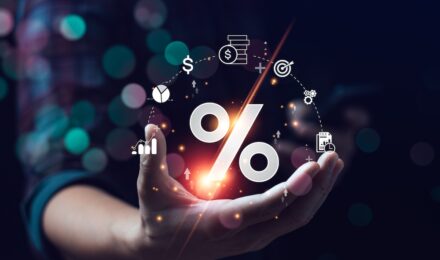When applying for a business loan, lenders look closely at both your personal and business credit scores. These numbers reflect how reliably you have managed debt in the past. A strong score signals lower risk, while a weak one raises concerns. For entrepreneurs with bad credit, this can feel like a locked door. But while credit scores are important, they are not the only factor lenders consider.
How Lenders View Bad Credit
Bad credit, typically defined as a score below 580, signals missed payments, high debt, or defaults. Traditional banks often reject applications outright in this range. Online lenders, however, may take a broader view. They weigh business revenue, time in operation, and cash flow alongside credit history. This approach gives some borrowers a pathway to financing, though the terms may be less favorable.
Loan Options Available With Bad Credit
Borrowers with poor credit still have access to financing, but the products often differ from standard term loans:
- Merchant Cash Advances: A lump sum provided in exchange for a percentage of daily credit card sales. Fast but costly.
- Invoice Factoring: Selling unpaid invoices to a lender at a discount for immediate cash. Useful for businesses with reliable clients but slow payments.
- Short-Term Loans: Smaller amounts with higher interest rates, repaid quickly.
- Equipment Financing: The equipment itself serves as collateral, lowering lender risk.
These options trade higher costs for accessibility, but they can keep a business afloat when traditional financing is out of reach.
Improving Approval Odds
Even with bad credit, you can take steps to strengthen your application. Demonstrating steady revenue and maintaining healthy cash flow can offset a weak credit profile. Providing collateral, such as property or equipment, may also persuade lenders to approve your request. Some lenders accept co-signers, though this requires someone else to take on the risk if you default.
Alternative Lenders And Fintech Solutions
Online lending platforms and fintech firms have expanded access for bad-credit borrowers. Many use data beyond credit scores, analyzing business transactions, sales history, or even digital payment activity. This alternative underwriting can open doors where banks say no. However, the convenience often comes with higher rates, so careful comparison is essential.
The Cost Of Borrowing With Bad Credit
The biggest trade-off for bad-credit loans is cost. Interest rates may be two to three times higher than those offered to borrowers with strong credit. Fees can add up quickly, from origination charges to daily repayment structures. For businesses already under financial strain, these costs can be difficult to manage. That makes it critical to borrow only what you need and to plan carefully for repayment.
Steps To Improve Future Options
Bad credit today doesn’t have to define your borrowing forever. Making consistent, on-time payments to existing creditors, reducing outstanding debt, and keeping business accounts in good standing can steadily improve your score. Even incremental progress can expand your options and lower your costs in the future.
Final Thoughts
Getting a business loan with bad credit is possible, but it comes with trade-offs. Online lenders, merchant advances, and alternative financing tools provide access when traditional banks close their doors. The key is weighing cost against necessity. In the long run, strengthening your credit and financial profile will unlock better terms and healthier options for your business.
References
- U.S. Small Business Administration — “Improve Your Chances Of Getting A Small Business Loan”: https://www.sba.gov
- Experian — “Business Loans For Bad Credit: What You Need To Know”: https://www.experian.com
- NerdWallet — “Best Bad Credit Business Loans”: https://www.nerdwallet.com
When applying for a business loan, lenders look closely at both your personal and business credit scores. These numbers reflect how reliably you have managed debt in the past. A strong score signals lower risk, while a weak one raises concerns. For entrepreneurs with bad credit, this can feel like a locked door. But while credit scores are important, they are not the only factor lenders consider.
How Lenders View Bad Credit
Bad credit, typically defined as a score below 580, signals missed payments, high debt, or defaults. Traditional banks often reject applications outright in this range. Online lenders, however, may take a broader view. They weigh business revenue, time in operation, and cash flow alongside credit history. This approach gives some borrowers a pathway to financing, though the terms may be less favorable.
Loan Options Available With Bad Credit
Borrowers with poor credit still have access to financing, but the products often differ from standard term loans:
- Merchant Cash Advances: A lump sum provided in exchange for a percentage of daily credit card sales. Fast but costly.
- Invoice Factoring: Selling unpaid invoices to a lender at a discount for immediate cash. Useful for businesses with reliable clients but slow payments.
- Short-Term Loans: Smaller amounts with higher interest rates, repaid quickly.
- Equipment Financing: The equipment itself serves as collateral, lowering lender risk.
These options trade higher costs for accessibility, but they can keep a business afloat when traditional financing is out of reach.
Improving Approval Odds
Even with bad credit, you can take steps to strengthen your application. Demonstrating steady revenue and maintaining healthy cash flow can offset a weak credit profile. Providing collateral, such as property or equipment, may also persuade lenders to approve your request. Some lenders accept co-signers, though this requires someone else to take on the risk if you default.
Alternative Lenders And Fintech Solutions
Online lending platforms and fintech firms have expanded access for bad-credit borrowers. Many use data beyond credit scores, analyzing business transactions, sales history, or even digital payment activity. This alternative underwriting can open doors where banks say no. However, the convenience often comes with higher rates, so careful comparison is essential.
The Cost Of Borrowing With Bad Credit
The biggest trade-off for bad-credit loans is cost. Interest rates may be two to three times higher than those offered to borrowers with strong credit. Fees can add up quickly, from origination charges to daily repayment structures. For businesses already under financial strain, these costs can be difficult to manage. That makes it critical to borrow only what you need and to plan carefully for repayment.
Steps To Improve Future Options
Bad credit today doesn’t have to define your borrowing forever. Making consistent, on-time payments to existing creditors, reducing outstanding debt, and keeping business accounts in good standing can steadily improve your score. Even incremental progress can expand your options and lower your costs in the future.
Final Thoughts
Getting a business loan with bad credit is possible, but it comes with trade-offs. Online lenders, merchant advances, and alternative financing tools provide access when traditional banks close their doors. The key is weighing cost against necessity. In the long run, strengthening your credit and financial profile will unlock better terms and healthier options for your business.
References
- U.S. Small Business Administration — “Improve Your Chances Of Getting A Small Business Loan”: https://www.sba.gov
- Experian — “Business Loans For Bad Credit: What You Need To Know”: https://www.experian.com
- NerdWallet — “Best Bad Credit Business Loans”: https://www.nerdwallet.com







